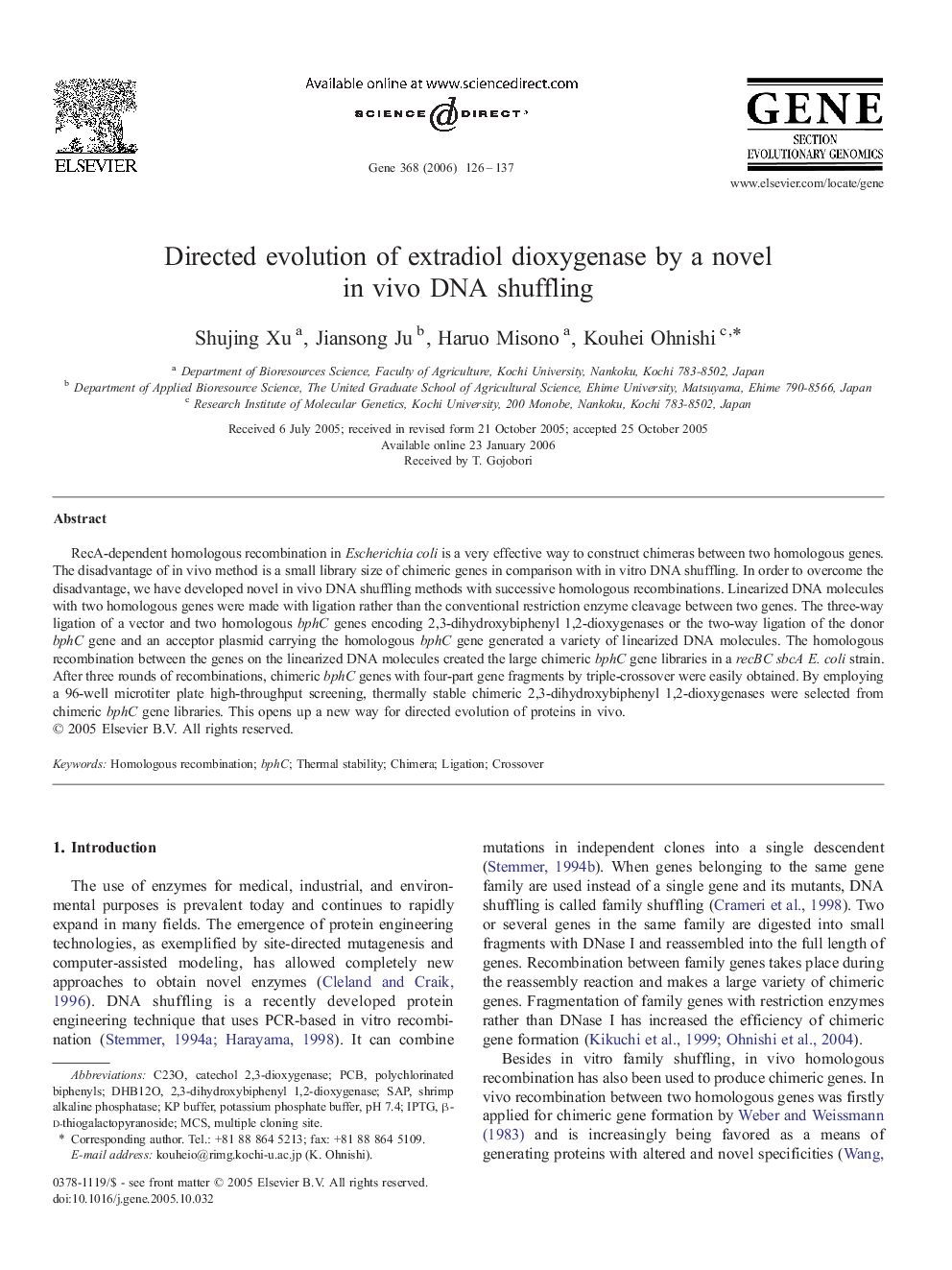| Article ID | Journal | Published Year | Pages | File Type |
|---|---|---|---|---|
| 2820369 | Gene | 2006 | 12 Pages |
RecA-dependent homologous recombination in Escherichia coli is a very effective way to construct chimeras between two homologous genes. The disadvantage of in vivo method is a small library size of chimeric genes in comparison with in vitro DNA shuffling. In order to overcome the disadvantage, we have developed novel in vivo DNA shuffling methods with successive homologous recombinations. Linearized DNA molecules with two homologous genes were made with ligation rather than the conventional restriction enzyme cleavage between two genes. The three-way ligation of a vector and two homologous bphC genes encoding 2,3-dihydroxybiphenyl 1,2-dioxygenases or the two-way ligation of the donor bphC gene and an acceptor plasmid carrying the homologous bphC gene generated a variety of linearized DNA molecules. The homologous recombination between the genes on the linearized DNA molecules created the large chimeric bphC gene libraries in a recBC sbcA E. coli strain. After three rounds of recombinations, chimeric bphC genes with four-part gene fragments by triple-crossover were easily obtained. By employing a 96-well microtiter plate high-throughput screening, thermally stable chimeric 2,3-dihydroxybiphenyl 1,2-dioxygenases were selected from chimeric bphC gene libraries. This opens up a new way for directed evolution of proteins in vivo.
